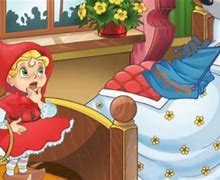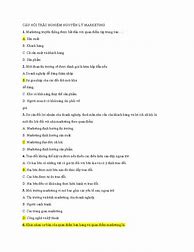
Truyện Cổ Tích Cô Bé Quàng Khăn Đỏ
Việc giáo dục, hình thành thói quen đọc sách cho học sinh rất được ngành Giáo dục và Đào tạo quan tâm. Bởi đọc sách cung cấp cho con người tri thức và mang lại rất nhiều lợi ích trong học tập cũng như cuộc sống. Đối với học sinh, việc đọc sách giúp mở rộng vốn từ, giao tiếp lưu loát, học tập ngày càng tốt hơn. Vì vậy, ngay từ tiểu học, các trường đã đẩy mạnh các hoạt động khuyến khích học sinh đọc sách, tạo thói quen giúp các em duy trì đọc sách hàng ngày.
Việc giáo dục, hình thành thói quen đọc sách cho học sinh rất được ngành Giáo dục và Đào tạo quan tâm. Bởi đọc sách cung cấp cho con người tri thức và mang lại rất nhiều lợi ích trong học tập cũng như cuộc sống. Đối với học sinh, việc đọc sách giúp mở rộng vốn từ, giao tiếp lưu loát, học tập ngày càng tốt hơn. Vì vậy, ngay từ tiểu học, các trường đã đẩy mạnh các hoạt động khuyến khích học sinh đọc sách, tạo thói quen giúp các em duy trì đọc sách hàng ngày.
Chú mèo tham ăn – The Cat Who Can Eat So Much
“The Cat Who Can Eat So much” là một câu chuyện cổ tích tiếng Anh ngắn của các nhà văn Peter Christen Asbjørnsen và Jørgen Engebretsen Moe. Câu chuyện kể về một con mèo gặp một loạt nhân vật khác nhau khi nó ăn tất cả những gì mình tìm được.
Cô bé quàng khăn đỏ – Little Red Riding Hood
Câu chuyện “Cô bé quàng khăn đỏ” là một câu chuyện cổ tích nổi tiếng khác được viết bởi Charles Perrault. Nó kể về câu chuyện của một cô bé đi lang thang vào rừng và bị lừa bởi một con sói đóng giả làm bà của cô.
Câu chuyện này có các động từ đặc biệt dễ hiểu sẽ giúp bé mở rộng danh sách từ vựng về hành động tiếng Anh và theo dõi câu chuyện tốt hơn.
Truyện cổ tích tiếng Anh “Hoàng tử Ếch” là một câu chuyện cổ tích vui nhộn được viết bởi Brothers Grimm nổi tiếng. Trong câu chuyện gốc, một nàng công chúa đánh rơi quả cầu vàng của mình xuống một con suối. Để lấy lại nó, cô phải làm bạn với một con ếch.
Truyện cổ tích tiếng Anh là gì?
Trong tiếng Anh, truyện cổ tích được gọi là “fairy tales”, là những câu chuyện mang màu sắc giả tưởng, thường có nhiều yếu tố thần kỳ như: phép thuật, cô tiên, động vật biết nói, người tí hon…
Truyện cổ tích thường được kể cho các bé nghe trước khi đi ngủ để giúp bé phát triển ngôn ngữ, trí tưởng tượng, đồng thời học được nhiều bài học bổ ích.
Một số từ vựng tiếng Anh thường gặp trong truyện cổ tích:
Kiến và Châu Chấu – The Ant And The Grasshopper
One bright day in late autumn, a family of Ants was bustling about in the warm sunshine, drying out the grain they had stored up during the summer, when a starving Grasshopper, his fiddle under his arm, came up and humbly begged for a bite to eat.
“What!” cried the Ants in surprise, “haven’t you stored anything away for the winter? What in the world were you doing all last summer?”
“I didn’t have time to store up any food,” whined the Grasshopper; “I was so busy making music that before I knew it the summer was gone.”
The Ants shrugged their shoulders in disgust.
“Making music, were you?” they cried. “Very well; now dance!” And they turned their backs on the Grasshopper and went on with their work.
There’s a time for work and a time for play.
Bọ cánh cứng phiêu lưu ký – The Beetle Who Went on His Travels
Câu chuyện cổ tích của Hans Christian Andersen kể về câu chuyện của một con bọ hung tự phụ tin rằng mình sẽ có được đôi giày vàng như con ngựa của Hoàng đế.
Nhiều bài học nhân văn và mang tính giáo dục cao
Bên cạnh những lợi ích trên, những câu truyện cổ tích Việt Nam tiếng Anh còn gửi gắm đến bé nhiều bài học hay về tình người và nhiều thông điệp nhân văn cao cả. Từ đó, bé sẽ được định hướng tính cách, nhận thức được cái đúng, cái thiện và có lối sống tích cực hơn.
Trên đây là 15 truyện cổ tích tiếng Anh chọn lọc do POPS Kids tổng hợp. Theo dõi POPS Kids để xem thêm những chương trình học tiếng Anh thú vị cho bé khác nhé!
#chúmèođidép #chumeodidep Đây là kênh đọc truyện cho trẻ em nghe. Chúng tôi khuyến k-hích các bậc phụ huynh trực tiếp kể truyện cho con mình nghe. Nhưng nếu các bạn không có thời gian hoặc đã mỏi mệt thì hãy sử dụng kênh đọc truyện này.
Những câu truyện được kể ở đây đều đã được chúng tôi đọc cho con cái của mình nghe. Có nhiều tình tiết chúng tôi đã sửa cho nhẹ nhàng và phù hợp với trẻ em Việt Nam hơn.… see more
Kích thích trí tưởng tượng và sáng tạo cho bé
Những câu chuyện sinh động, hấp dẫn qua lời kể của ba mẹ sẽ mang lại cho bé sự tưởng tượng phong phú. Với các yếu tố kỳ ảo, những câu chuyện về thế giới thần tiên và phép thuật sẽ kích thích bé tưởng tượng, đồng thời hình thành năng lực khái quát hóa để hiểu được nội dung của truyện cổ tích bằng tiếng Anh.
Kể truyện cổ tích cho bé ngủ ngon cũng là một phương pháp được nhiều phụ huynh áp dụng để ru con ngủ nhanh hơn.
Cậu bé chăn cừu – The Boy Who Cried Wolf
Câu chuyện cổ tích này của nhà văn ngụ ngôn Hy Lạp nổi tiếng Aesop kể về câu chuyện của một cậu bé liên tục nói dối mọi người về việc nhìn thấy một con sói. Một ngày nọ, khi cậu thực sự nhìn thấy một con sói, không còn ai tin vào tiếng hét của cậu nữa.
Cô bé bán diêm – The Little Match Girl
It was terribly cold and nearly dark on the last evening of the old year, and the snow was falling fast. In the cold and the darkness, a poor little girl, with a bare head and naked feet, roamed through the streets. It is true she had on a pair of slippers when she left home, but they were not of much use. They were very large, so large, indeed, that they had belonged to her mother, and the poor little creature had lost them in running across the street to avoid two carriages that were rolling along at a terrible rate. One of the slippers she could not find, and a boy seized upon the other and ran away with it, saying that he could use it as a cradle when he had children of his own. So the little girl went on with her little naked feet, which were quite red and blue with the cold.
In an old apron, she carried a number of matches and had a bundle of them in her hands. No one had bought anything of her the whole day, nor had anyone given her even a penny. Shivering with cold and hunger, she crept along; poor little child, she looked the picture of misery. The snowflakes fell on her long, fair hair, which hung in curls on her shoulders, but she regarded them not.
Lights were shining from every window, and there was a savory smell of roast goose, for it was New-year’s eve – yes, she remembered that. In a corner, between two houses, one of which projected beyond the other, she sank down and huddled herself together. She had drawn her little feet under her, but she could not keep off the cold; and she dared not go home, for she had sold no matches, and could not take home even a penny of money. Her father would certainly beat her; besides, it was almost as cold at home as here, for they had only the roof to cover them, through which the wind howled, although the largest holes had been stopped up with straw and rags.
Her little hands were almost frozen with the cold. Ah! Perhaps a burning match might be some good, if she could draw it from the bundle and strike it against the wall, just to warm her fingers.
She drew one out – “scratch!” how it sputtered as it burnt! It gave a warm, bright light, like a little candle, as she held her hand over it. It was really a wonderful light. It seemed to the little girl that she was sitting by a large iron stove, with polished brass feet and a brass ornament. How the fire burned! And seemed so beautifully warm that the child stretched out her feet as if to warm them, when, all the flame of the match went out, the stove vanished, and she had only the remains of the half-burnt match in her hand.
She rubbed another match on the wall. It burst into a flame, and where its light fell upon the wall it became as transparent as a veil, and she could see into the room. The table was covered with a snowy white tablecloth, on which stood a splendid dinner service, and a steaming roast goose, stuffed with apples and dried plums. And what was still more wonderful, the goose jumped down from the dish and waddled across the floor, with a knife and fork in its breast, to the little girl. Then the match went out, and there remained nothing but the thick, damp, cold wall before her.
She lighted another match, and then she found herself sitting under a beautiful Christmas tree. It was larger and more beautifully decorated than the one which she had seen through the glass door at the rich merchant’s. Thousands of tapers were burning upon the green branches, and colored pictures, like those she had seen in the show windows, looked down upon it all. The little one stretched out her hand towards them, and the match went out.
The Christmas lights rose higher and higher, till they looked to her like the stars in the sky. Then she saw a star fall, leaving behind it a bright streak of fire. “Someone is dying,” thought the little girl, for her old grandmother, the only one who had ever loved her, and who was now dead, had told her that when a star falls, a soul was going up to God.
She again rubbed a match on the wall, and the light shone around her; in the brightness stood her old grandmother, clear and shining, yet mild and loving in her appearance.
“Grandmother,” cried the little one, “O take me with you; I know you will go away when the match burns out; you will vanish like the warm stove, the roast goose, and the large, glorious Christmas tree.”
And she made haste to light the whole bundle of matches, for she wished to keep her grandmother there. And the matches glowed with a light that was brighter than the noon day, and her grandmother had never appeared so large or so beautiful. She took the little girl in her arms, and they both flew upwards in brightness and joy far above the earth, where there was neither cold nor hunger nor pain, for they were with God.
In the dawn of morning there lay the poor little one, with pale cheeks and smiling mouth, leaning against the wall; she had been frozen to death on the last evening of the year, and the New-year’s sun rose and shone upon a little corpse! The child still sat, in the stiffness of death, holding the matches in her hand, one bundle of which was burnt.
“She tried to warm herself,” said some.
No one imagined what beautiful things she had seen, nor into what glory she had entered with her grandmother, on New-year’s day.
A long time ago and far, far away an old woman was sitting in her rocking chair thinking how happy she would be if she had a child. Then, she heard a knock at the door and opened it. A lady was standing there and she said, “If you let me in, I will grant you a wish.” The old woman let the woman in firstly because she felt pity, secondly because she knew what she’d wish for…a child. After she washed the lady up and fed her, she saw that she was really beautiful.
The lady slept soundly all night long and then right before she left, she said, “Now, about your wish. What do you want?”
The lady thought about most people’s wishes to be the richest in the world, the most powerful person, the smartest, and the prettiest. But the old woman wished for
something the lady could not believe. She said, “I would like a child.”
“What did you say?” she asked because she was astonished at what the old lady asked for. The old lady repeated what she said. “I would like a child.”
The lady then placed a tiny seed in the old woman’s hand and gave her instructions. ” Plant this seed, water it carefully, watch over it, and give it your love. If you do all those things, then you will have a child.”
So the old woman did all of those things the lady had told her to. In a week, there was a beautiful yellow flower in place of the seed. The next day, the flower bloomed. Inside the flower was a beautiful little girl who was the size of the woman’s thumb so she called her Thumbelina. She made her a little dress out of golden threads. Thumbellina slept in a walnut shell and brought the old woman joy and happiness.
But, one day when Thumbellina went down for her nap, a frog hopped through the open window and said, “You will be a perfect bride for my son,” and she took Thumbellina to a lily pad and hopped off to find her son.
Thumbellina cried and some little guppies heard her and chewed the roots off the lily pad to help her escape. Thumbellina’s lily pad floated away. A few hours later, she finally stopped floating. During the summer, she ate berries and drank the dew off the leaves. But then winter came and she needed shelter. A kindly mouse let her stay with it, but it said, “You’ll have to marry my friend, Mole, because I cannot keep you for another winter.”
The next day she went to see Mole. In one of the tunnels, she found a sick bird and said, “Poor thing, I will bury it.” Then she found out that it was still alive and she cared for it until it was ready to fly. It flew off. That fall she nearly had to marry Mole. But then she heard a familiar tweet and an idea popped up in the bird’s head.
“You can come down to the warm country,” said the bird, so Thumbellina hopped on the bird’s back and flew to the warm country. The people there who were like her renamed her Erin. She married a prince and she lived happily ever after.


















